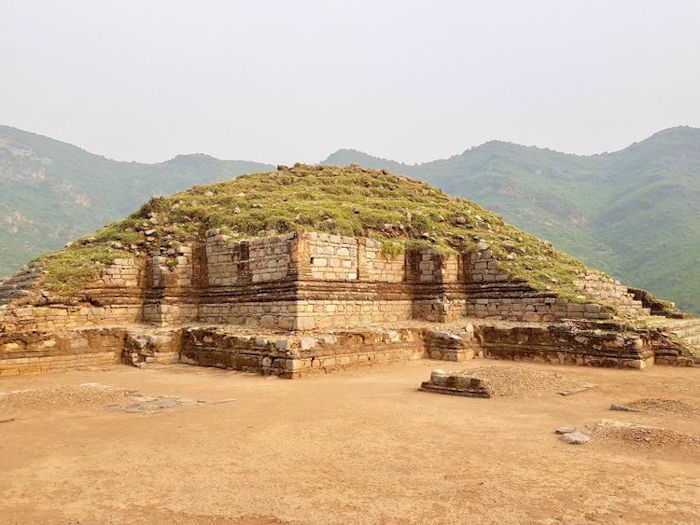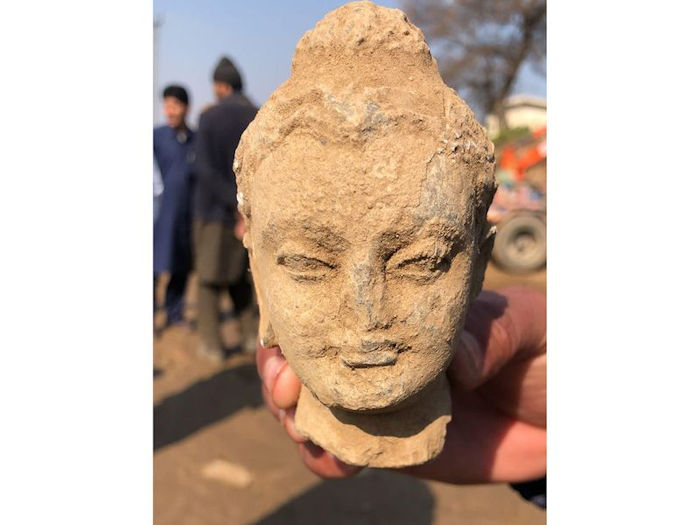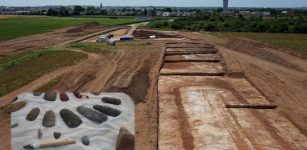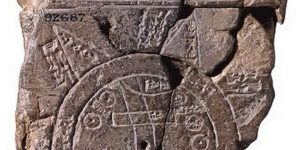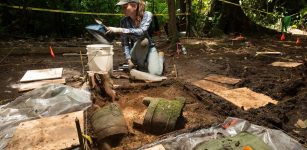1,800-Year-Old Buddhist Stupa And Relics Discovered Near Bazira, The Ancient City Of Alexander The Great
Conny Waters – MessageToEagle.com – Archaeologists excavating in Pakistan report they have unearthed a 1,800-year-old Buddhist stupa and relics in the region of the northwestern province of Khyber Pakhtunkhwa.
This is a great archaeological discovery for several reasons. To begin with, this is the largest and oldest stupa found in the region. The fact scientists have discovered Buddhist and Hindu temples located next to each other implies followers of these faiths lived side by side in the region or that they had built layered structures, one after the other.
Bhamala Stupa was discovered in Pakistan. Credit: Sana Jamal/Gulf News
According to local media, officials from the provincial Department of Archeology and Museums have announced the discovery of more than 400 Buddhist antiquities.
“The archaeologists have discovered 1,800-year-old historical artifacts of the Buddhist period during excavation,” the director of the Department Archaeology and Museums, Dr. Abdul Samad Khan, was quoted as saying. “It is a significant discovery in many ways, especially in connection with religious harmony, tolerance, and multiculturalism in the Gandhara period.”
“As well as the stupa and a variety of sculptures, artifacts discovered at the site include coins and stamps from the rule of an Indo-Greek monarch, hinting at the area being the site of a multicultural city thousands of years ago.
The discoveries were made in Swabi District—in an area known in the ancient world as Bazira—around 83 kilometers from the modern-day provincial capital of Peshawar, at an archaeological excavation that has already revealed a Buddhist temple believed to date from about the middle of the second century BCE.
The discovery implies that the temple was built within a few hundred years of the mahaparinirvana of the historical Buddha,” Buddhist Door reports.
Artifacts including a palm-sized Buddha head and an ancient wall was discovered in Haripur, Khyber Pakhtunkhwa province. Credit: KP archaeology department
“Ancient Bazira, also known as the city of Alexander the Great was established after the destruction of the lower city in the third century by a catastrophic earthquake.
The city was abandoned in the third century and lost to history, but some years ago Italian archaeologists unearthed this ancient lost city of Bazira.
“Ancient Bazira was a big city and an important Buddhist site. Archaeological discoveries at the site also provide important historical information about the extinct Gandhara kingdom that lasted from around the sixth century B.C.E. to the eleventh century C.E.
View of the Bazira Barikot site. Credit: Dawn
Following Alexander the Great’s invasion of north-western India, Gandhara became renowned for its fusion of Greek and Buddhist culture.
Pakistan was the home of early Buddhism and it was important for Buddhists around the world and people living in Gandhara region were the first to have introduced the image of Buddha.
The ancient city of Bazira had no chance to defend itself against Alexander the Great’s invasion.” 1
Followers of Buddhism and Hinduism lived peacefully in the region as the great ancient temples can attest to.
“Pakistan is blessed with rich cultural heritage and is known as the cradle of civilization. The whole country from Khyber Pakhtunkhwa (KP) to Punjab to Sindh and Balochistan is full of archaeological treasures which remain hidden and undiscovered. Only about five percent of the sites in KP province have been scientifically explored,” Dr. Abdul Samad, KP director for archaeology and museums, told Gulf News.
He says the young archaeologists “take pride in protecting and preserving Pakistan’s multicultural heritage and hope they would do a lot better with funds and support from the government to “present the country’s glorious past to the world” and restore its identity as a multicultural society.
As explained by Buddhist Door, “Buddhism has played a significant role in shaping the history and culture of what is now Pakistan and Afghanistan, flourishing in the kingdoms that lay on the Silk Road trade routes with Central Asia. The conquests of the Mauryan Emperor Ashoka (r. c. 268–c. 232 BCE) and the subsequent Greco-Buddhist culture which blossomed under the Gandhara kingdom that emerged in what is today northwestern Pakistan and eastern Afghanistan from around 800 BCE to 500 CE, saw Buddhism establish deep roots that lasted for more than 12 centuries.
Directorate of Archaeology & Museums, KP team has started an archaeological survey for the first time in Mohmand district where prehistoric caves, rock carvings, Buddhist and Hindu Shahi archaeological sites were discovered.
Credit: KP archaeology department
A wealth of ancient Buddhist stupas, monasteries, images of the Buddha, and other artifacts attest to this ancient and deeply rooted heritage. Ashoka’s territorial expansions, coupled with Greek influences in the mid-to-late fourth century BCE led to a unique cultural melting pot that saw the first known Buddhist statuary emerge in Gandhara—considered by many to represent the pinnacle of Buddhist art.”
See also: More Archaeology News
The pre-Islamic ancient Pakistan was home to centuries-old civilizations like Mehrgarh (7000 to 2500 BC), Indus Valley (2500 and 1500 BC) and the Gandhara (550 BC to 1021 AD), making it a revered destination for followers of Buddhism, Sikhism and Hinduism.
The country, however, lost many of the precious artifacts due to antiquities smuggling and also the government’s negligence.
However, Pakistan’s current government is focusing efforts to preserve and promote heritage sites, as well as keep ancient artifacts safe.
Written by Conny Waters – MessageToEagle.com – AncientPages.com Staff Writer
Expand for references
